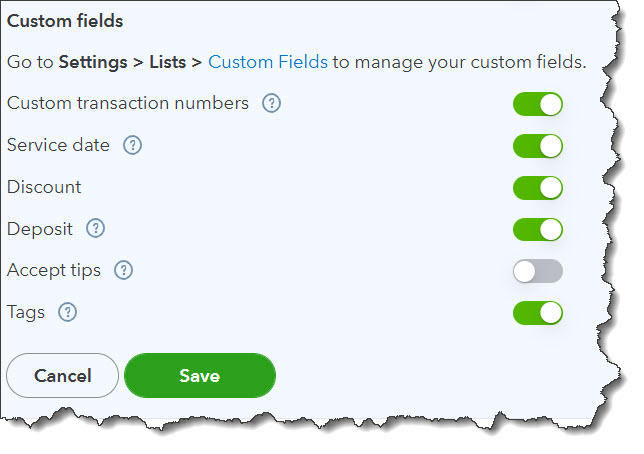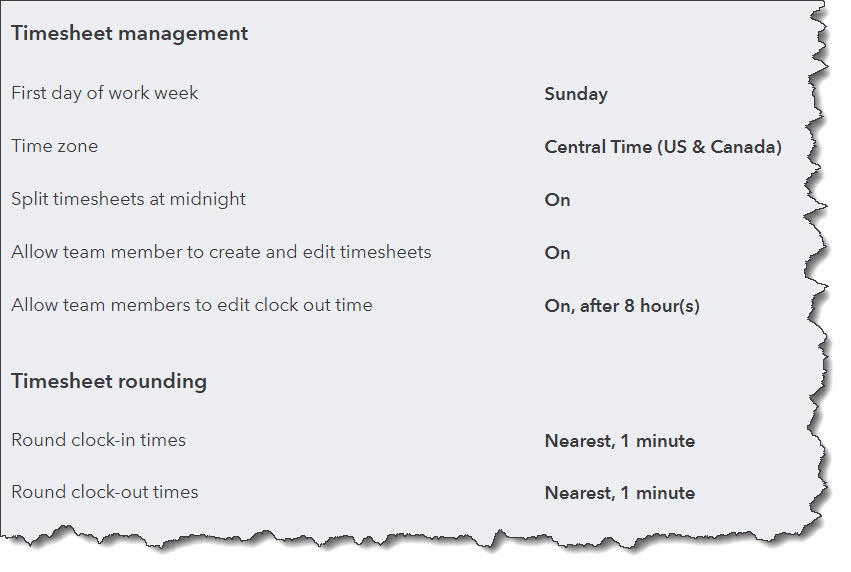You have more control over QuickBooks Online than you might think. Consider changing some settings.
QuickBooks Online comes equipped with a lot of default content. It provides forms like invoices and statements that are already formatted with their own fields and layouts, ready to bring in your company’s data. Reports have default columns and rows. Contact and product records have a standard structure, as do timesheets.
The site is designed to meet the needs of “average” small businesses. Some companies might be able to use it without ever making any changes. But more likely, at some point, you’ll want to modify the content and/or layout of a particular function.
QuickBooks Online has settings you can change. Whether you’re new to the application or you’ve been using it for years, you should explore these options carefully. You might be surprised by the modifications that are possible—and pleased to learn about features you never knew about.
Core Settings
Opening your settings pages is easy. Click the gear icon in the upper right corner and select Account and Settings in the upper left. You’ll find that you already supplied some information to QuickBooks Online during setup, like the details that appear when you click Company in the toolbar. You can always make changes here if necessary.
Sales Settings
We’re going to focus on four types of settings. The first are displayed when you click the Sales tab. You’ll see several sub-tabs here related to different types of sales settings. To make changes, click the pencil icon on the right. Be sure to click Save when you’re done with each section and Done in the lower right when finished.
Here’s what to pay special attention to:

These are your options when you want to modify QuickBooks Online’s
- Sales form content – Change the look and content of your sales forms, like estimates and sales receipts. You can turn fields on and off (e.g., Deposits) and add custom fields.
- Products and services – Decide whether to include Product and Service columns, an SKU column, and whether you’ll track inventory.
- Late fees – QuickBooks Online can calculate these and include them on overdue invoices. They can even be customized per customer.
- Reminders – Automate invoice reminders and create a default email message to accompany them.
Expenses
QuickBooks Online doesn’t have as many accounts payable settings, but you might discover helpful features you didn’t know about. For example, you can:
- Create purchase orders
- Display an item’s table on expense and purchase forms
- Use tags
- Establish default bill payment terms
- Designate items and expenses as billable and set a default markup rate
QuickBooks Online also supports online Bill Pay, which can save time, reduce errors, and help ensure your payables meet their due dates. You can upload bills, schedule payments, and manage user approvals through this service (extra charges apply). If you want help getting started, let us know.
Time Tracking Settings
If your company sells services, you’ll want to set up QuickBooks Online for time tracking. You may also want to track employee work hours. This can be complex, especially if employees are entering their own time. Consider these options:
- Timesheet management – Decide whether team members can create/edit timesheets and whether you want to round clock-in/out times.
- Timesheet fields – Choose which fields should appear (service items, billable status and rates, location, etc.).
- Manage kiosk – Decide if you’ll set up a computer or laptop to serve as an employee time clock.
- Notifications – Send reminders when time is adjusted or notes are added.

Advanced Settings
Some of these preferences may have been set during setup, but it’s worth reviewing to confirm accuracy. These are critical building blocks of your QuickBooks Online company file, so changes should be made thoughtfully. Please ask us if you’re unsure.
Examples include:
- Company’s accounting method (cash or accrual)
- First months of fiscal and tax years
- Whether you want to “close” your books
- Company’s business structure (sole proprietor, corporation, LLC, etc.)
- Whether to number accounts in your Chart of Accounts
We’ve encouraged you throughout this column to reach out with questions. While many settings can be managed on your own, we especially recommend consulting us on Advanced Settings. We’re always available to address any QuickBooks Online concerns.


%20(1).png)